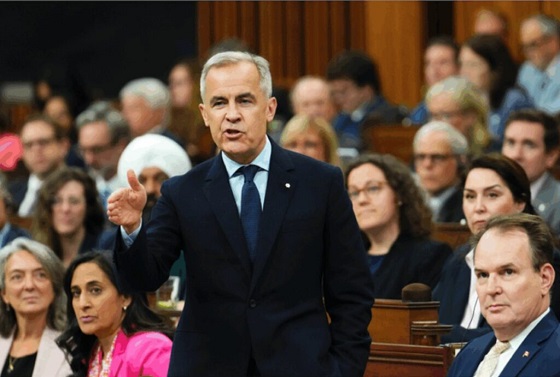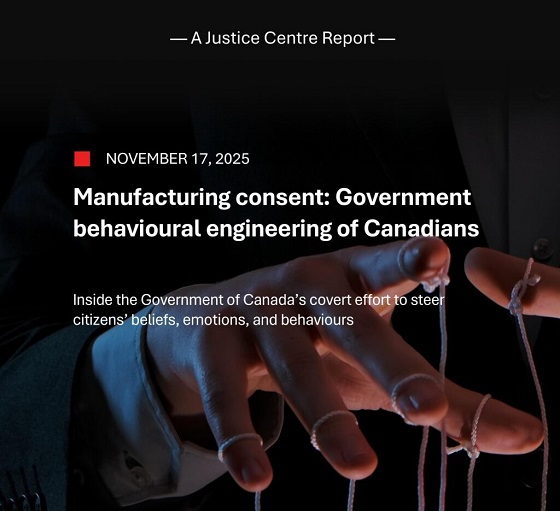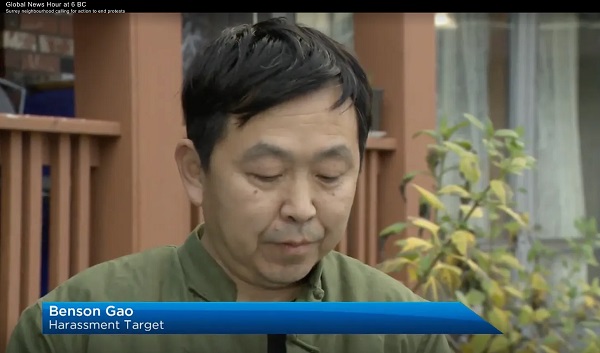Alberta
Notes from Flight 163, the oilsands shuttle from Toronto to Edmonton

Shared with permission from author Stewart Muir
Stewart Muir is a Victoria-based writer who serves as executive director of the Resource Works Society.
On a recent Monday morning, I found myself on Air Canada Flight 163 from Toronto Pearson to Edmonton. As the plane loaded, I began to sense there was something not so regular about the passengers boarding the Airbus 320 for a regularly scheduled flight.
Unlike those I more typically see on my flights, nobody was in flip-flops or golf wear, or fussing with oversized or unnecessary luggage. This was a mix mostly without the easy-to-spot snowbirds, students, and first-time fliers.
The travellers this day were mostly middle-aged men, fit-looking and dressed Mark’s Work Wearhouse casual. There were some women too, and like the men they moved with familiar ease through the cabin lugging full but neatly packed backpacks or duffels. Many carried a preferred travel distraction in hand, ready for a few hours of Netflix or sudoku. I could hear the distinctive accents of the Maritimes and Quebec, and the more familiar central Canadian English, as they found their places the way transit riders enter a subway car.
It was rapidly apparent that I was witnessing a commuter routine, one not meaningfully different than the suit-filled shuttles carrying day-tripping lawyers, accountants, pharma reps, engineers and lobbyists from the same airport that morning to destinations like Ottawa, Montreal, Boston and New York.
In concentrated form, I was witnessing a typical, daily migration of the Canadian oil sands workforce, probably with some LNG and mining thrown in. They were heading to the workplace. Not for a day, but for stretches of a week or two.
Multiply this by dozens or scores, in airports across the country, usually less starkly evident than on this particular flight, and it was just a regular day in Canadian air travel as the massive energy employee base changed shift.
A few hours later, after we unloaded at the other end, I headed for the exit and my Uber. Not so most of my fellow passengers. They continued on their way to connecting flights – to destinations such as Fort McMurray, Grande Prairie, and air services flying direct to some of the big oil sands projects – in time for shift change at the work camps where they were expected.
Statistics could not convey more forcefully than this how the oil & gas economy has a singular and powerful effect on the economy. The large paycheques drawing these men and women to their jobs in the West flowed directly back to their family bank accounts in the GTA and beyond, paying mortgages, grocery bills, taxes and hockey fees.
Flight 163, multiplied many times over, represents what the energy sector, at its most direct and tangible, does for the Canadian economy.
This is what I’m thinking about while surveying a nation that is now deep into an unprecedented social and economic crisis.
Over the coming days and weeks, things that we do will affect how deep and damaging this crisis becomes.
We are seeing Green New Deal advocates pursue the thesis that the coming economic catastrophe is the perfect moment to “transition off fossil fuels”. There are plenty of signs of this thought process – “Hey guess what guys, in one stroke we could meet the Paris Agreement by dropping emissions to 30 per cent below 2005 levels – not by 2030, but by 2021!”
To put this in perspective, consider that the Conference Board of Canada recently estimated that in one of the milder transition scenarios, meeting such targets will cost Canadians $2.2 trillion and require 14 per less use of residential energy, 47 per cent less car travel, eight times the subway use, and 54 per cent less domestic air travel.
Who’s ready to make this change overnight? We couldn’t do it if we wanted to. Think for just a moment about the costs and tradeoffs required, and the difficulty of accomplishing it in the midst of a global health crisis. Clearly it makes no sense at all. Yet Canada might be the only oil-exporting country where accelerating the transition is likely to receive serious acknowledgment in senior decision-making circles.
Even without such measures, Canada is already moving in the right direction: we are a global leader in clean energy, with 80 per cent of the population living in provinces where more than 90 per cent of electricity is drawn from non-fossil fuel sources. This alone makes us the envy of the world. The prevalence of clean electricity means that wherever it is used in industry, the resulting resource commodity exports can outcompete most other similar products in climate terms, with the bonus that they can allow importing countries to reduce their own emissions.
Mere inattention could do as much damage at this time as a wrong decision. Standing back and watching the domestic oil and gas industry topple will have an effect on citizen wellbeing far in excess of what the collapse of any other industry would bring.
We would be looking at the long-term impairment of Canadian living standards – that is to say a reduction in the value of our jobs, in our quality of life, in our educational opportunities, and in our ability to help other countries while continuing as a net positive influence on the world.
The fossil fuel industry – “it is how we earn our living”
It’s hard to describe how important the energy industry is to Canada. Let me try.
Andy Calitz, the former CEO of LNG Canada who performed the herculean task of achieving a positive final investment decision (FID) for the project before moving on to his next challenge, provided a memorable image when he spoke at a small dinner of diplomats and academics I attended not long after the FID.
When the first shipload of liquefied natural gas departs from Kitimat in a few years’ time, he said, that cargo would be worth $100 million – a staggering sum. (I’ve run this figure past a couple of experienced heads in the energy field, and nobody has scoffed at it.)
In Vancouver, we go giddy each spring at the thought of cruise ship season, which last year saw 290 sailings out of the port. If, as is commonly said, one of those sailings means $1 million injected into the local economy, how does that compare with LNG?
Back of envelope math says that a single year of LNG Canada operations, with its promised traffic of one ship in and one ship out every day, will have the impact of one century of the Vancouver cruise industry. I’m not knocking the cruise industry, it’s important and we need it. But let that comparison sink in.
Here’s another one.
Back in 2017, I calculated that natural gas investments in British Columbia that year were on a scale that equated to building the behemoth Wynn hotel in Las Vegas (4,750 rooms over 215 acres) in the Vancouver area, along with a special SkyTrain extension to serve it. ( Natural gas is back: British Columbia drilling surge is behind $5+ billion in 2017 investment )
Never mind that no investor has ever come forward with such a bold plan for a new resort anywhere in Canada. And it’s actually pretty fortunate that we got the energy infrastructure rather than the casino, given the prospects for tourism in 2020.
Economist Patricia Mohr recently pointed out that Canada is “a trading nation and an ‘energy specialist’ — it is how we earn our living.” Crude oil, all by itself, generated net exports of $62 billion in 2019, up from $57.5 billion in 2018 — far above any other export category.
As Ms. Mohr stated, oil exports come in handy given that we habitually run large deficits in other areas including motor vehicles and parts, machinery, electronic equipment, and consumer goods.
During the COVID-19 crisis, it’s obvious we cannot go without lifesaving medical necessities. Unlike our abundant oil, producing them isn’t a great strength. Canada must import billions’ worth of these goods every year. If you isolate just three medical categories – vaccines, medical apparatus and breathing aids – the numbers show clearly that our own ability to manufacture these items is very limited, even as consumption grows year after year.

The current global crisis has already brought a plummeting Canadian dollar, which in turn makes the imported goods that we rely on more costly. Exports that we can sell for U.S. dollars will offset this, but only if we have products to sell and markets ready to buy them. We need to preserve the ability to produce more as more income is needed, while at the same time figuring in the unfortunate reality that many of the things we export are themselves falling in price, so that higher production volumes are required just to stay in place.
The resource economy actually turns out – despite its detractors – to be both flexible and durable as a source of national well-being. Markets for some of the commodities we produce can be expanded at will, something that cannot be said of iPhones, beach umbrellas or BMWs.
Right now in Russia, the government is starting to realize it might not have been such a good idea to enter into an oil price war with Saudi Arabia. More and more evidence suggests that for a winner to emerge will require not months but years of effort, and at the end of it the United States oil industry, resented deeply by both Russia and Saudi Arabia, could well come on top anyways.
The most chilling observation, as reported today by the Wall Street Journal, comes from Igor Sechin, head of Russia’s largest oil producer, state-controlled giant Rosneft: “If you give up your market share, you will never get it back.”
There’s a lesson in this for Canada. Those who see an “opportunity” to deliberately give up our oil market share, to encourage a fast pivot into an unknown energy future, are playing recklessly with how we as a country earn our living. If we ratchet down production by letting industry fail, and decide later that it was a mistake to do so, we will not easily be able to retrieve our market share. That’s a frightening thought. Worse still, killing off the industry will make Canadians more dependent on imported oil, which will have to be paid for using a weakened loonie.
Doing what’s necessary
In 2018, the federal government announced an export diversification strategy that would increase Canada’s overseas exports by 50 per cent by 2025. Even before the combined oil/pandemic crisis, it seemed an unlikely ambition.
“Investing in infrastructure to support trade” was one of the ways Ottawa deemed it could aid this ambitious goal, and credit is due for supporting projects such as the so-far-incomplete Trans Mountain and Coastal GasLink pipelines.
Other forces are holding us back. The Canada Infrastructure Bank, for example, is forbidden from investing its $35 billion of capital in fossil fuel projects, even if those investments could lead to lower energy use and emissions in the oil & gas upstream.
Meanwhile, our national infrastructure minister seems physically incapable of uttering the phrase “energy infrastructure” let alone the p-word (pipelines). Even our minister of natural resources has been placed in the uncomfortable position of carrying out a mandate letter requiring him to making finding alternative employment for oil and gas workers and communities a central task.
Now is the time to save, not strangle, an oil and gas industry that is frantically signalling the need for intervention .
Prime Minister Justin Trudeau’s Quebec lieutenant Pablo Rodriguez yesterday promised Bombardier : “Our government is taking the necessary steps to get you financial help as quickly as possible.” A stock analyst opined that the Canadian and Quebec governments were “likely to offer support if Bombardier gets close to the edge.” (See Globe and Mail story .)
If a single company controlled by a wealthy clan, making luxury jets for billionaires, is to be given this treatment, then there should be no hesitation all in backing the industry that convincingly represents the foundational strength of our entire nation.
Trudeau has always found it difficult to make strong gestures of support to the Canadian oil patch. This time, finding it within himself to say those words of support matters more than ever. There is a very serious risk that Canada’s long term prosperity in both an absolute and a relative sense will be impaired by what occurs in the coming hours, days and weeks. Ahead of us, economic success will only come through determination and political commitment to put people and jobs first.
Stewart Muir is a Victoria-based writer who serves as executive director of the Resource Works Society.
Grow your business with the Daily Oil Bulletin – the trusted source for Canada’s oilpatch.
Canada in talks with the U.S. to avoid troops at the border, says Trudeau
Alberta Energy Regulator names senior Saskatchewan government official as CEO
Alberta
Albertans choose new licence plate design with the “Strong and Free” motto

First new plate in 40 years hit the road in 2026.
Albertans have chosen beautiful Moraine Lake in Banff National Park as the new design for the province’s licence plate.
After three rounds of voting and more than 240,000 votes cast, Albertans have spoken. The iconic Moraine Lake in Banff National Park will be featured on the province’s new licence plate.
Available in mid-2026, echoing the “Strong and Free” motto of our province, the plate reflects Alberta’s bold identity, economic strength and deep-rooted provincial pride. The motto’s inclusion on the licence plates will also serve as a nod to Canada’s national anthem and Alberta’s position as a strong and sovereign province within a united Canada.
“Albertans know who we are and what we stand for: we are strong, free, resilient and united by the natural beauty that defines our home. Moraine Lake is recognized around the world, and the fact that Albertans chose it makes this new plate deeply meaningful. Thank you to the Albertans who cast more than 240,000 votes and helped choose a design that showcases Alberta’s natural beauty and will stand as a proud symbol of our province for years to come.”
Moraine Lake is one of Alberta’s most iconic destinations, making it fitting that it be on the province’s licence plates for motorists around the country to see. The licence plate depicts the breathtaking panoramic view of Moraine Lake that perfectly displays the province’s beautiful Rocky Mountains, which attract visitors from around the world to Alberta.
“Having the iconic Moraine Lake on our licence plates is something we can all be proud to show off. Thank you to every Albertan who cast their vote in our tournament. Because of you, the beauty and strong and free spirit of our province will be on display for motorists across the country.”
If an Albertan wants to replace their current plate for the new licence plate once it is released, they can voluntarily pay a $28 fee. Alternatively, Albertans could obtain a new plate on their vehicle registration renewal date at no additional cost. Motorists may also continue using the previous licence plate once the new licence plate is brought onboard, provided it is still in good condition.
Quick facts
- Alberta’s current licence plate was designed in 1984.
- In 2021, Alberta began a transition from painted to reflective plates with the same design.
- The new design incorporates reflective technology to improve readability for law enforcement and automated systems in low-light conditions, and to meet international standards for visibility, legibility and counterfeit resistance.
Alberta
Edmonton and Red Deer to Host 2027 IIHF World Junior Hockey Championship

News release from the Red Deer Rebels and Hockey Canada
Hockey Canada, in partnership with the Canadian Hockey League (CHL) and International Ice Hockey Federation (IIHF), has announced that the 2027 IIHF World Junior Championship will be played in Edmonton and Red Deer, Alberta, from Dec. 26, 2026 to Jan. 5, 2027.
The successful bid represents a partnership between OEG Sports & Entertainment, the Red Deer Rebels, Hockey Alberta, the Cities of Edmonton and Red Deer, and the Province of Alberta, which made an $11 million commitment in February 2024 to host events in communities throughout the province.
“We are excited to bring the IIHF World Junior Championship back to Edmonton and Red Deer, and to give hockey fans in Alberta and across the country the opportunity to watch the top under-20 players compete for a gold medal right here in Canada,” said Dean McIntosh, senior vice-president of revenue, fan experience and community impact with Hockey Canada. “Both cities have been successful hosts of IIHF and other high-profile international events, and we know our partners in Edmonton and Red Deer will host a world-class event for players, teams, fans and volunteers alike.”
The 18,500-seat Rogers Place, home of the National Hockey League’s Edmonton Oilers and Western Hockey League’s Edmonton Oil Kings, will serve as the primary competition venue and host 17 games, including both semifinals and the medal games. The additional 14 games are set for the 7,050-seat Marchant Crane Centrium, home of the WHL’s Red Deer Rebels.
“Alberta is ready to welcome visitors from around the world for the International Ice Hockey Federation World Junior Championship,” said Andrew Boitchenko, minister of tourism and sport for Alberta. “This event celebrates the spirit of international competition and our province’s passion for hockey, while showcasing Alberta as a world-class destination for sporting events.”
“Edmonton is thrilled to co-host the IIHF World Junior Championship. This tournament is a fantastic opportunity to watch the world’s best junior hockey players right here in our community, showcasing emerging talent and inspiring a new generation of athletes,” said Andrew Knack, mayor of Edmonton. “Hosting world-calibre events like this also injects vital tourism dollars into our local economy, boosts our city’s vibrancy, and solidifies Edmonton’s reputation as a premiere sports tourism destination.”
Edmonton last hosted the IIHF World Junior Championship in August 2022, which was rescheduled from its traditional winter slot due to the COVID-19 pandemic. The gold medal game at the 2022 event was an instant classic, with Mason McTavish making a game-saving play in overtime and Kent Johnson netting the game-winner just over a minute later to give Canada its 19th World Juniors gold medal. The city also hosted in 2021 without fans, and was a co-host with Calgary for the 2012 edition of the event. Red Deer was a co-host for the cancelled 2022 World Juniors, and first hosted the annual under-20 tournament in 1995.
“We are proud to welcome the 2027 IIHF World Junior Championship back to our region,” said Jesse Smith, chief executive officer of Tourism Red Deer. “Red Deer’s love for the game and our hospitality will ensure an unforgettable experience for every athlete and fan.”
“The World Juniors give Edmonton an extraordinary opportunity to showcase our city on the world stage,” said Arlindo Gomes, vice-president of business development and venues management with Explore Edmonton. “This event strengthens our global reputation as a premier international sport destination while delivering more than $90 million in total economic impact to our community and inspiring the next generation of hockey players and fans. Edmonton loves hockey and we cannot wait to welcome global athletes and fans.”
Pre-tournament games for the 2027 World Juniors are expected to take place throughout Alberta, allowing fans across the province to watch the best junior hockey players from 10 countries before the puck officially drops in Edmonton and Red Deer on Boxing Day.
With demand for tickets expected to exceed availability, more information about a priority ticket draw and tournament ticket packages will be announced in the coming months. Fans looking to receive updates about the 2027 IIHF World Junior Championship as soon as they become available can sign up to become a Hockey Canada Insider today.
“On behalf of all of us at OEG Sports & Entertainment, we are proud to once again be hosting the IIHF World Junior Championship and the best young stars on the planet,” said Stu Ballantyne, president and chief operating officer of Rogers Place and ICE District. “The World Juniors is one of the most celebrated tournaments in hockey, and bringing it back to Edmonton is an honour for our city, our fans and our entire organization. ICE District and Rogers Place were built to facilitate and showcase the very best in sport and entertainment, and we look forward to working closely with Hockey Canada and other partners to deliver an unforgettable experience for the athletes, fans and the global hockey community.”
“We are beyond excited for our fans, partners and community to once again welcome the hockey world to Red Deer,” said Merrick Sutter, senior vice-president of the Red Deer Rebels. “This is a community that loves events, and we know their passion will be on full display once again next December.”
For more information on Hockey Canada and the 2027 IIHF World Junior Championship, please visit HockeyCanada.ca, or follow along through social media on Facebook, X, Instagram and TikTok.
-

 Alberta1 day ago
Alberta1 day agoNational Crisis Approaching Due To The Carney Government’s Centrally Planned Green Economy
-

 Alberta1 day ago
Alberta1 day agoAlberta Offers Enormous Advantages for AI Data Centres
-

 Alberta1 day ago
Alberta1 day agoCalgary mayor should retain ‘blanket rezoning’ for sake of Calgarian families
-

 Bruce Dowbiggin1 day ago
Bruce Dowbiggin1 day agoSports 50/50 Draws: Make Sure You Read The Small Print
-

 COVID-191 day ago
COVID-191 day agoNew report warns Ottawa’s ‘nudge’ unit erodes democracy and public trust
-

 Censorship Industrial Complex1 day ago
Censorship Industrial Complex1 day agoQuebec City faces lawsuit after cancelling Christian event over “controversial” artist
-

 espionage1 day ago
espionage1 day agoTrump says release the Epstein files
-

 Carbon Tax9 hours ago
Carbon Tax9 hours agoCarney fails to undo Trudeau’s devastating energy policies







